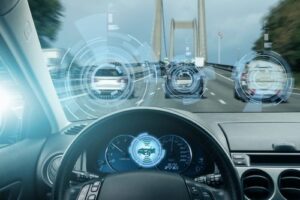
Advancements in Vision Technology and Lenses
In recent years, the automotive industry has experienced tremendous growth. Technological advancements have played a major role in shaping its direction. Driving monitoring has seen a lot of development. It involves using cameras and sensors to monitor driver behavior and the environment. Vision technology and lenses will play a key role in driving monitoring both inside and outside of the vehicle. Integration of advanced technology and vision lenses in vehicles will revolutionize how we drive, ensuring a safer trip for everyone on the road.
Current state of vision technology and lenses in driving monitoring
Since its introduction in the automotive sector, Vision Technology and Lenses has evolved significantly. Cameras are now an integral part of many driving monitoring systems. They provide a 360° view of the vehicle.
In the future, driving monitoring will be enhanced by advanced vision technologies, such as high-resolution cameras and 3D cameras. These cameras will offer greater accuracy, wider angle, and improved performance under challenging lighting conditions. These cameras will feature advanced algorithms capable of processing vast amounts data in real time, allowing the system to detect various driving scenarios and react accordingly.
But despite these advances, current vision technology and lenses have limitations. Blind spots are a problem with traditional cameras, as they can make it difficult to detect peripheral objects or events. Image quality can also be affected by low-light conditions, glare or adverse weather conditions. Researchers and manufacturers are working to overcome these limitations by exploring new developments in the field of vision technology, and lenses specifically designed for driving monitoring applications.
In the near future, several innovations in vision technologies and lenses will revolutionize driving monitor systems. These developments include:
- Wide-Angle Lenses – Next-generation lenses offer wider fields of vision than the ones currently available. This will allow for improved detection of hazards and situational awareness.
- High Dynamic (HDR) Imagery: HDR imagery will improve picture quality through a wider range of colors and levels of contrast, leading to more accurate object classification and detection.
- Night Vision Systems – Advanced night vision systems that use thermal imaging or low light sensors allow drivers to see clearly even in environments with poor lighting, reducing the chance of an accident caused by poor visibility.
- Stereo Vision: Stereo vision uses two or more cameras to create 3D point clouds to measure the distance between objects. This allows for more accurate obstacle detection and tracking.
- Artificial Intelligence Enhancement (AI): AI algorithms are expected to continue improving, increasing the accuracy of monitoring drivers and providing more personalized feedback based on driver behavior.
- Edge Computing: By shifting computing processes to edge devices, latency will be reduced and real-time processing capability will increase. This means faster response times in critical driving situations.
- Multi-Modal Sensory: By combining data from multiple sensors (cameras, radars, lidars, and ultrasonics), comprehensive models of the environment can be created that will enhance safety and reliability.
- Augmented Reality Displays (AR): AR displays project pertinent information onto the side or windshield windows to keep drivers informed, without blocking their view.
- Driver Monitoring with In Cabin Sensors: Next-generation driving monitoring system will include in-cabin sensor to track driver wellness and health, including heart rate, blood oxygen levels, and body temperature. Cabin monitoring systems use similar technology to monitor driver behavior, passenger activity and detect unusual events inside the vehicle. Cabin monitoring systems may also improve safety belt use. Seatbelt compliance can be monitored by cameras installed in the back seats. This ensures that passengers buckle up correctly. The system will alert the driver when a passenger is not wearing a seatbelt properly.
- Integration with Autonomous Technologies As autonomous technologies progress, driving monitoring systems must integrate seamlessly with them, allowing a seamless transition between computer and human control.
Impact of Vision Technology and Lenses on Road Safety
Vision technology and lenses have a significant impact on road safety. They offer numerous benefits, including enhanced driver awareness, reduced blind spots, lower accidents rates, improved night vision, and the support of advanced driver assistance systems. We can expect to see more innovative vision technologies and lenses emerge as technology advances, improving road safety even further.
Related Posts
3D Scanning
...




